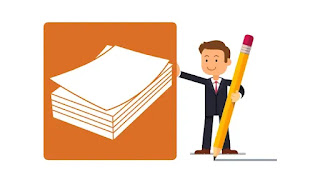Whether it's unprofessional errors in your manuscript or your poor conduct as a person, there are some blunders that instantly throw you into the reject pile. Read this article to find out what publishers hate that quite a lot of writers do.
***
People often ask me to give an opinion on their writing. In most cases, when I agree to take a look at the first section or chapters, I’m astounded (and frequently offended) at how unprofessional their work is – full of spelling mistakes, typos, horrible punctuation or no punctuation whatsoever. I’ve been writing for 31 years, and I wouldn’t show one of my first drafts to my dog, yet I’m often sent work with such gross errors that it’s clear the author hasn’t even bothered to read the story through before sending it out. Not only is this insulting to the person asked to give up his or her own time to read this story, it’s counterproductive because it instantly creates a negative impression.
If you’re asking an author or other professional to read your work, don’t send them a first draft and ask, ‘I just want to know if I can write.’ All first drafts are bad, as Hemingway famously said, and no editor or publisher will take your first draft and edit it into shape. All professional writers have learned the craft of storytelling by working out how to edit their own work. There are oodles of great books around on writing and storytelling. I’ve listed some of the best below.
Each of the big publishers receives 3,000 – 5,000 fiction manuscripts a year, yet only 5 – 10 of those will be accepted for publication. Most of those manuscripts are rejected on the first few paragraphs and some aren’t read at all. To give yourself a chance of publication, your story has to be great and the manuscript bulletproof, otherwise it’s likely to go straight in the bin. If you want to know more about how the writing and publishing industry works, see my detailed article HERE.
Every publisher puts their submission guidelines on their website. And every day, the manuscripts pouring in reveal a complete ignorance of these guidelines. Clearly, many writers have a professional death wish. On the basis that every writer who can be encouraged to fail should be so encouraged, here are the best ways to get your manuscript junked.
How to Have Your Manuscript Rejected Instantly
Any author who is too lazy or arrogant to learn the basics of their craft will be rejected out of hand. Here’s how to do it:
- The cover letter and manuscript are full of spelling mistakes and typos;
- Sentences are written in mangled English. If you want to be a writer, you have to learn how to write. Seems simple enough;
- Incompetent use of punctuation, or no punctuation;
- The whole manuscript is in one paragraph;
- The manuscript and covering letter are written in capital letters. Using CAPITALS isn’t just utterly wrong, it’s regarded as shouting at the recipient;
- The manuscript is sent in the body of an email;
- The writing is grossly offensive, libellous or obscene;
- The story is an obvious retelling of Twilight, Harry Potter or some other well-known novel, TV series, movie, graphic novel or computer game.
How to Irritate the Publisher and Create a Really Bad Impression
To create a really bad impression on the editor who’s reading your work, and reduce your chances of getting it published, I recommend that you:
- Ignore the submission guidelines on the publisher’s website;
- Don’t bother to research the kinds of work the publisher publishes. Eg, send adult fiction to a publisher who only publishes children’s stories; or a novel to a publisher who only publishes non-fiction (and so on);
- Send an unedited first draft full of story errors, repetition and inconsistencies.
- In your story, write down every rambling idea that comes into your head, whether relevant to the story or not, and refuse to take anything out;
- Send your manuscript by email when the publisher requires it to be in print, or vice versa;
- Send a long, vague cover letter, full of irrelevant information, or quotes from your mother or your friends about how much they loved this book. Cover letters should be no more than one page and should include:
- A one-paragraph description of the book, including its title, genre, word count and expected audience (eg, readers of epic fantasy, supernatural romance or true crime).
- A few lines about yourself, including any interesting details of your life or experience, particularly if they’re relevant to the book you’re writing;
- Relevant publishing credits (other books or stories you’ve had published – unpublished writing isn’t relevant).
- Use quotes only if from a reputable source, eg a well-known author or reviewer. Quotes will never get your book published; the most they can do is encourage the publisher to look at it more closely.
- Include a brief synopsis. 300 words is plenty. If the publisher wants more, they’ll ask for it.
- Use incorrect manuscript format, eg weird fonts, coloured font, tiny font, single spacing, line break between each paragraph, paragraphs not indented, text formatted into two columns etc. Manuscripts are formatted the same way that novels are, not the way that business letters and reports are formatted. Manuscript format means wide margins (about 4 cm) all around; double-spaced; a common serif font like Times or Century, 12 point; the first paragraph of each chapter or section beginning at the margin and all succeeding paragraphs indented.
- Make boastful comparisons between your own work and the work of Tolkien, JK Rowling, George RR Martin or any other prominent author. If your work is that good (and it never is), the publisher will notice it very quickly;
- Be assertive or pushy about how great your story is, eg with statements like, ‘This book is going to make your name.’ The boasting of an untried amateur is a huge turn-off.
- Send an enormous outline of the story with the covering letter. The outline should at most be a page and a half and should include the ending.
- Send random sample chapters. Sample chapters should be sequential and begin with Chapter 1.
- Include gifts with the manuscript. Gifts are likely to be seen as bribes and will create a very bad impression.
- Pester the publisher for a quick response. As I mentioned, publishers get thousands of manuscripts a year and it can take months to check them. Patience is a virtue every author needs in bucket loads.
Ready to start your publishing journey? Reach out to us here at SOI Publishing. Let's make your book the next bestseller.
Culled from Ian Irvine















